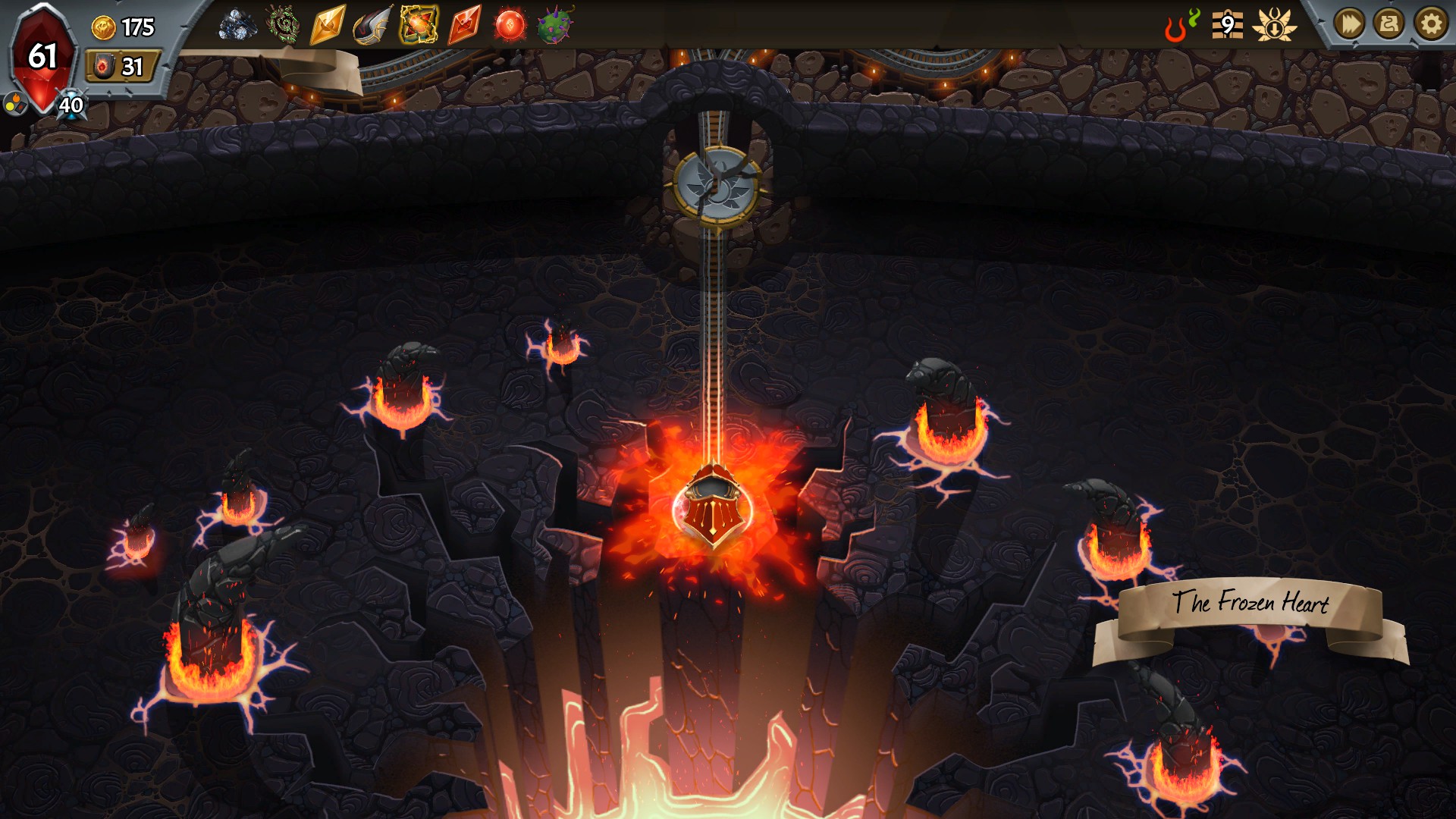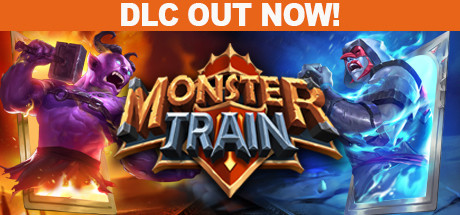The experience of Monster Train is somewhat contradictory, as the gameplay can be addictive, but there’s also little reason to repeatedly play it.
Type: Single/Multiplayer
Genres: Card Game, Deck Builder, Roguelike
Developer: Shiny Shoe
Publisher: Good Shepherd Entertainment
Release Date: 21 May, 2020


First Impressions
Monster Train (MT) isn’t necessarily the type of game I seek out, mainly because deckbuilders can get very technical and complicated. I’m not the kind of person who wants to shuffle through all the cards in order to figure out the right synergy, combinations, and optimal set-up to combat RNG. However, with the reviews being overwhelmingly positive and totaling more than 11,000 strong, I figured many of those reviews stemmed from people like me. Gamers who like strategy and the mechanics of a card game, but don’t want to get a calculator and notepad out.
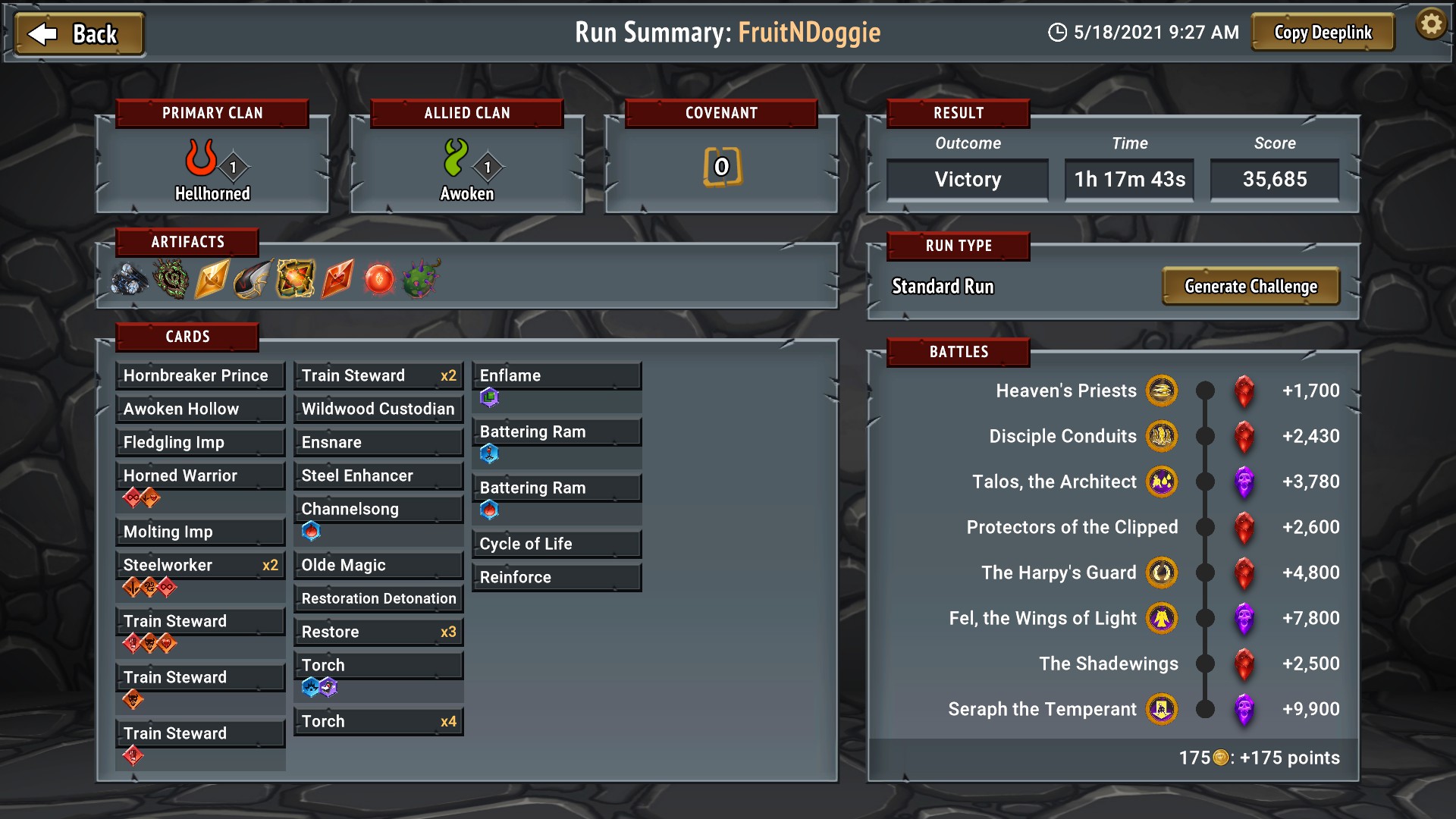
Gameplay
Although there’s a Challenge Mode available for additional difficulty, and Hell Rush for a multiplayer variant, the primary game mode is Standard Run. It creates the framework in which you fend off the advancing angels, and after every battle you have 2 paths to choose between, left and right. I’m not positive if it’s always the exact same or if there’s some random elements to it, but each side has 2-4 options available to strengthen your deck. These range from healing your pyre to a completely random event that could grant you an artifact or another card for your deck. Artifacts stick with you all the way through a run, and provide a wide range of effects, some of which are very specific to the champion or clan you’re using.
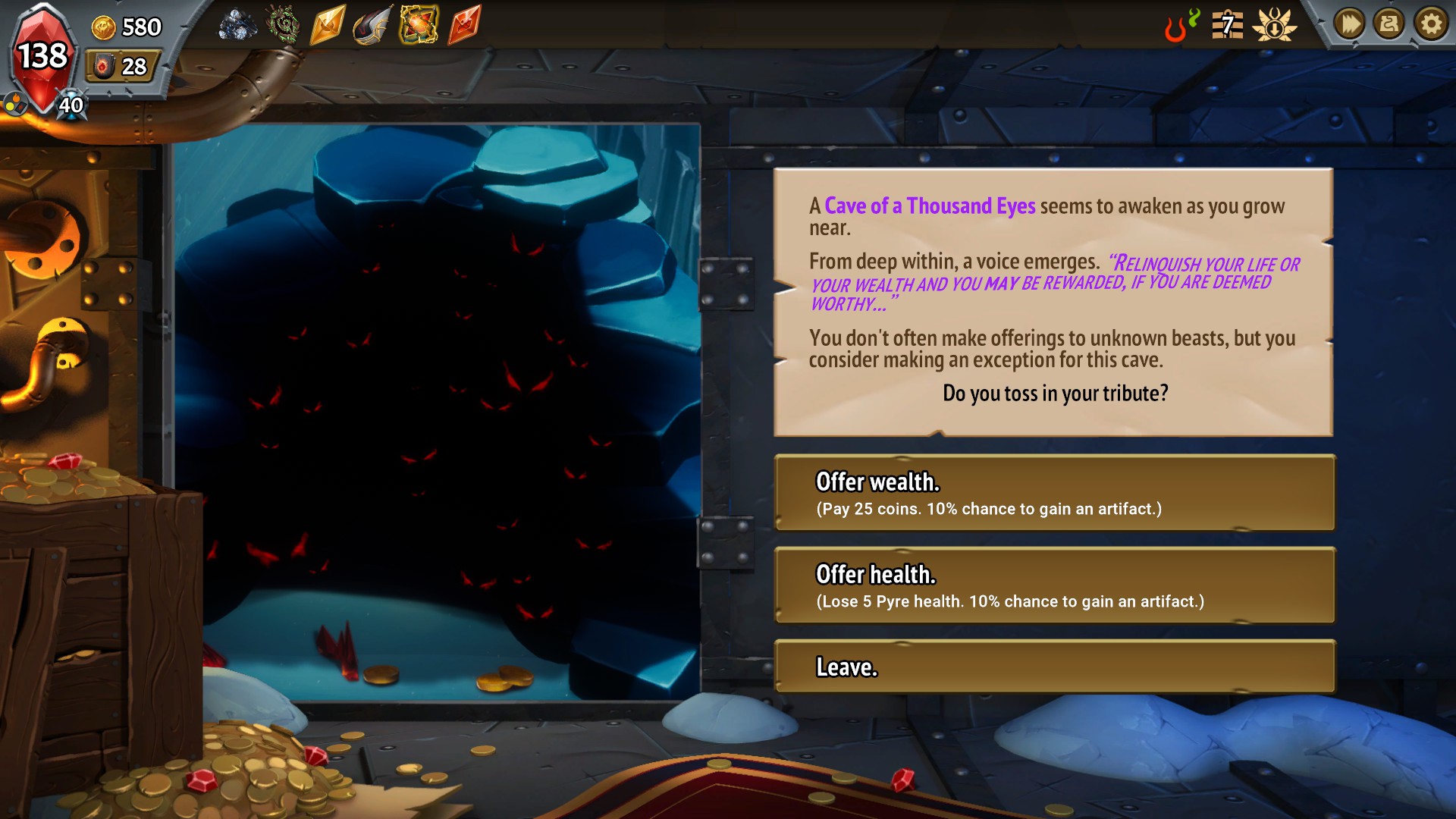
The battles themselves are structured in a 4 tier system, with your run-dependent pyre sitting at the very top. Enemies can get to it without ending the run, but if they do too much damage, it’ll be destroyed and you’ll fail. This means the other 3 are used as defense to ensure that doesn’t happen. What’s nice about this system is that you can place your monsters wherever you want to freely, and depending on how a specific spell works, can activate them on the friend or foe of your choice. A few limiting factors is the Capacity cost for summoning a monster to the field, with the default being 5 for each floor. The other main cost for using a card is Ember, and you start each turn with 3. Determining the right time to use your cards is one of the primary facets of the game’s strategy, demonstrating why algebra’s order of operations is so important.
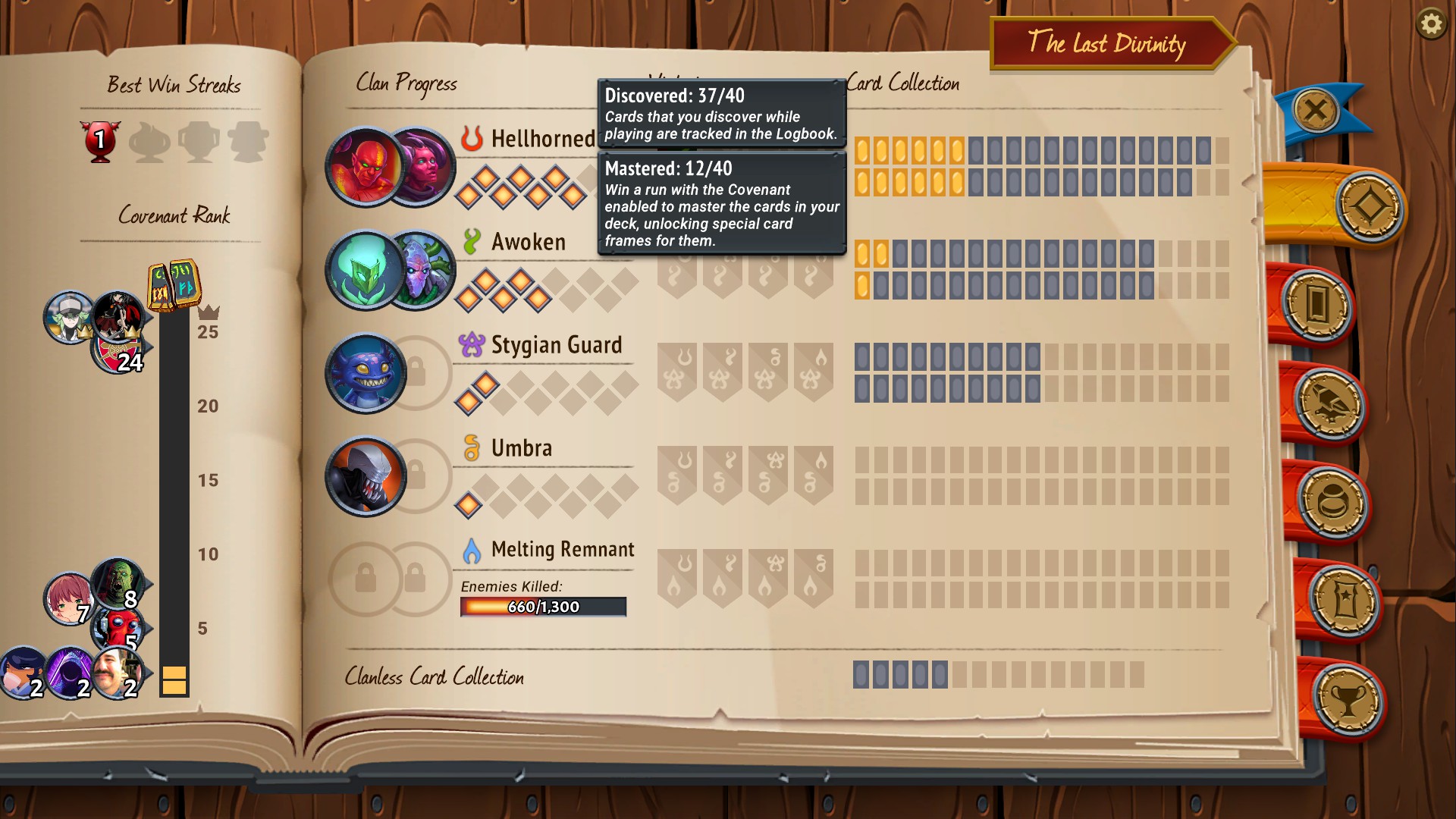
Controls
As a card game, MT is controlled solely with the mouse. I had no problems or confusion using this set-up, and have no complaints to make. It works very well.
Story
Heaven’s angels were able to freeze over Hell, by snuffing out the source of its hellfire. Except some of it managed to be salvaged, and if Hell’s forces were able to bring a portion of it back to the center of Hell, it’d rekindle these flames. When you do this the first time clearing a Standard Run, it doesn’t actually do anything, because you’ll play the same mode again and relight the fire the same way after beating it each time. It’s inconsistent and confusing, indicating this is a very thin reason given for the game’s mechanics.
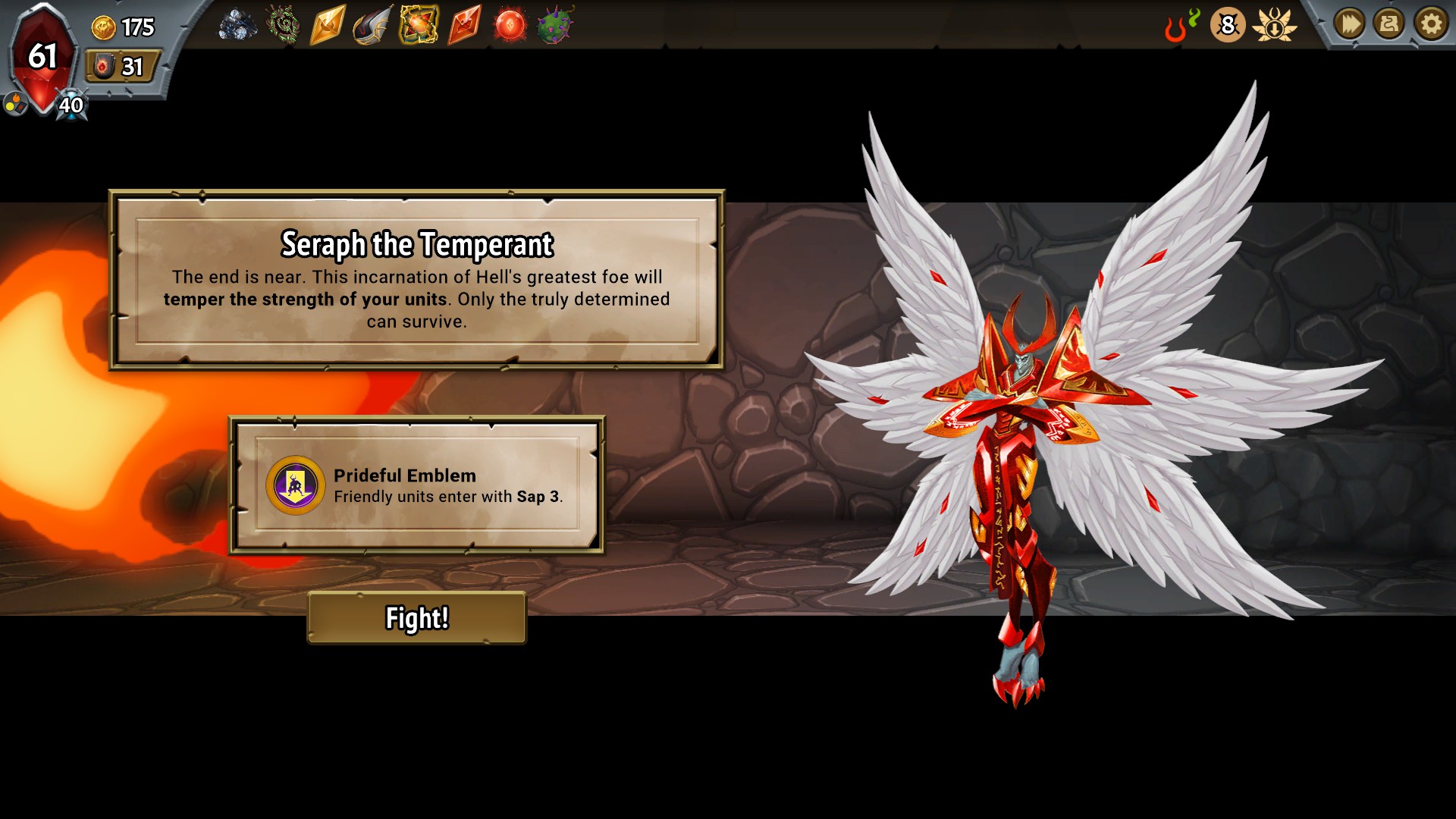
Graphics
As MT is a card game, most of the visuals wind up being static images. Monsters have slight idle animations, as they’ll bob a scant amount. Each has a simple attack and being damaged animation, while spells show a simple effect on screen as they’re activated. It slightly reminds me of Yu-Gi-Oh, and the big deal Seto Kaiba made over creating hologram projections for Duel Monsters, even though it barely did anything. There’s not much reason to complain about this, but you won’t see much spectacle in the game. Similarly to the music, many of the clans’ monsters don’t have a Hellish look to them, but they’re unique enough to not remind me of generic baddies from any RPG.
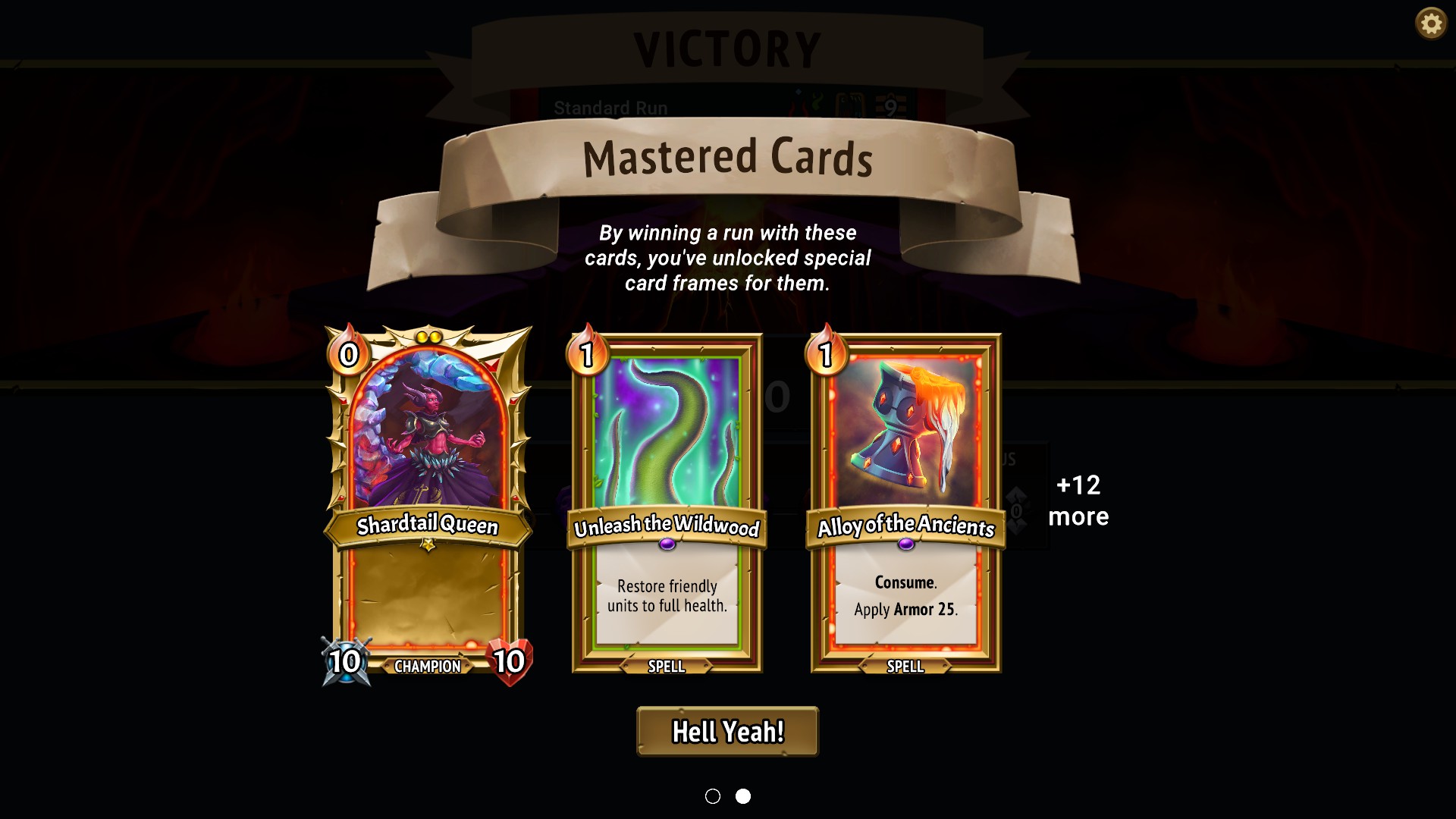
Sound Design
I like the music in MT, as it has an orchestral sound to it, and since the game has a fantasy setting, the music is grand and energetic. Although the conflict is between the forces of Heaven and Hell, the songs don’t really resonate with those themes, as I would say this music would fit in any generic fantasy game. There’s enough variety in the songs it shouldn’t get old too fast, but if you plan on putting in a lot of time, muting it out for other music might be a good idea. I didn’t notice any irritating sound effects that’d disrupt my focus.
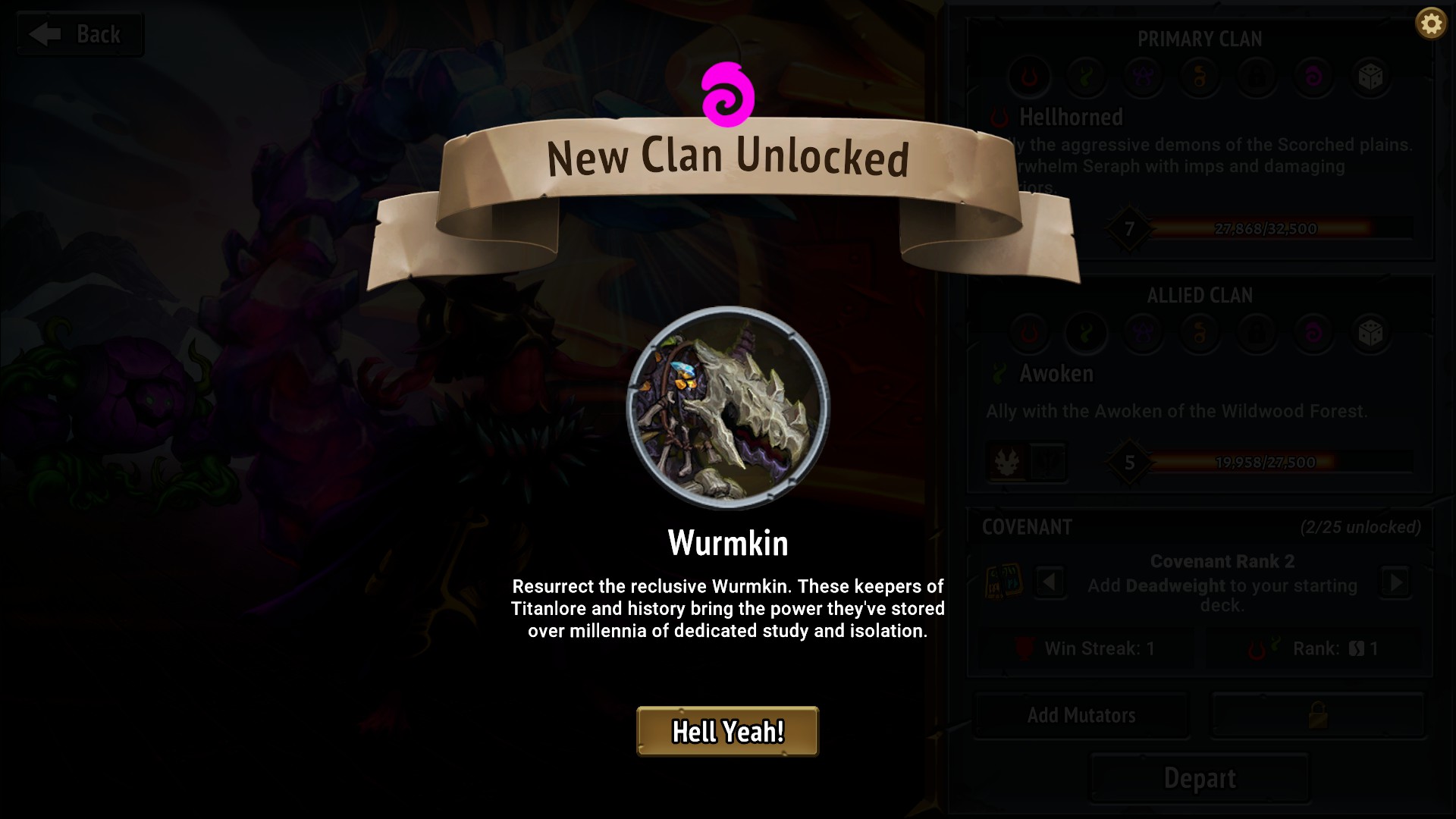
Pros
- The clans emphasize different traits and strategies, helping them feel distinct and interesting to play as. Even the second champion plays very differently within the same clan. Figuring out how to synergize 2 clans together takes time and experience though.
- When you get the right set-up in place, it’s really satisfying for your powered-up monsters to mow down the enemies, knowing everything you play afterwards is unnecessary overkill.
- You can speed up the combat so much that it takes very little time to process. Since you get a preview of the results after placing your monsters down, there’s no reason not to.
Cons
- So many factors of MT are completely random, which gets a bit annoying. Having so little control over the deck I have to use doesn’t give as strong a sense of satisfaction or self-direction. I just go where the wind blows me and hope it’s sufficient to get me to the end.
- There’s definitely a learning curve to overcome in order to figure out the game’s mechanics. Between 5 clans that play differently and various card effects, coming up with a winning strategy can take a while to develop.
- Since you’d be playing through the same enemies and situations so often, the game starts getting repetitive pretty quickly. Some greater elements of variety in the gameplay would go a long way.
Tips
- A mistake I made early on was putting my strongest cards on the bottom floor, trying to prevent enemies from moving up at all. However, this doesn’t work very well. The top floor should be reserved for cards that need time to build up their strength, so they can be kept safe yet have enough damage output to be a solid wall. Lower floors need higher defense to weather repeat attacks, and to chip away at incoming enemies. The back most part of each row should go to your highest damage dealer, so they have the time to tear into the boss.
- Obviously, picking the right path and upgrades in-between battles is important, but so is the order. I tend to visit the events with no cost first, such as upgrading the Champion, so I know how many resources I have left before shopping. Destroying cards helps keep your deck in the low 20’s, a sort of sweet spot. Duplicating cards is best done on ones already upgraded, so you get the benefit of that upgrade for ‘free.’ You can exit a shop and return to it, and unpurchased items will still be there.
- When using a spell, unless it has the consume or purge property, it’ll be recycled back into your deck and can be reused infinitely. If a monster is summoned and killed in battle, it’s gone for the rest of the fight. So though some monsters will be fodder, you don’t want to be frivolous with them. This is why Endless is such a useful attribute on the right monster.
- If you botch a fight by playing the wrong card, you can go to the main menu and restart the battle.
Final Thoughts
Not long ago, I reviewed a slightly similar game called Legend of Keepers, and I’d say MT suffers from the same crucial flaw that game had. After beating Standard Run a few times, and especially after leveling up a clan to max level, the incentive to keep playing isn’t really there. Usually, a roguelike grants access to new dungeons, and provides permanent upgrades that alter your playing style with new abilities. In this case though, you face off against the same hurdles every single time, with minor variations and no rewards to get excited by. Instead, you just get to keep making the game harder for yourself, without any gains to off-set them, except for a few extra cards thrown into the pool of RNG.
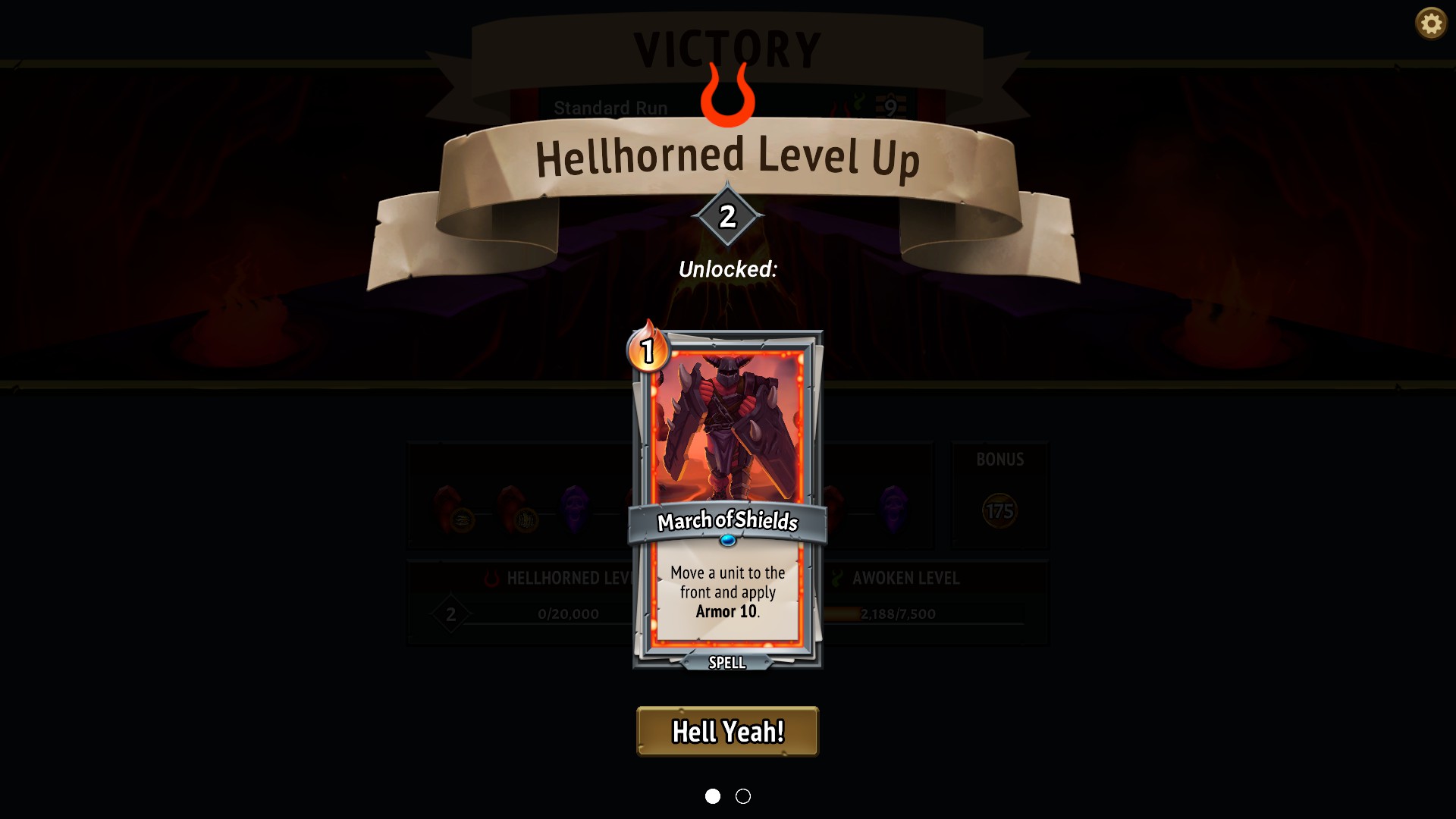
Admittedly, I find MT more addictive than Legend of Keepers, as I kept going back in for another attempt, wanting to play more of the game. However, I wish there was a mode available where I could build the deck for myself and use the cards I choose instead of always relying on randomness to construct my deck. With as much as I’ve enjoyed the gameplay, and with the high percentage of players earning achievements for clearing higher Covenant levels, I can’t say MT is completely off the mark. There’s something appealing in its design, so I recommend it, but you might want to consult advice on how to stack the deck in your favor, as some combinations work much better than others.
